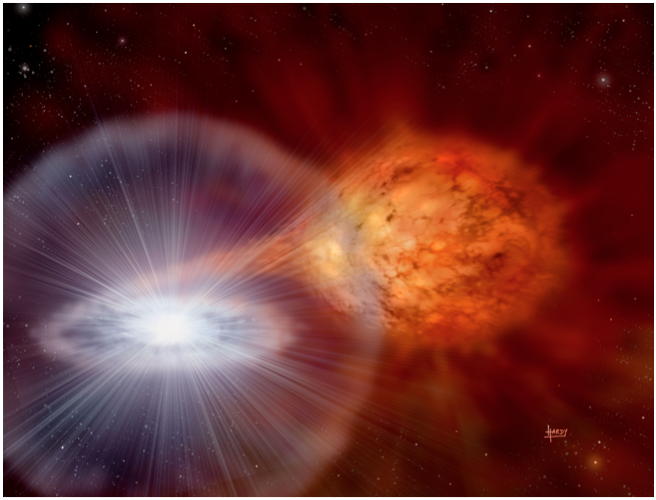HMC Physics Colloquium
Tuesdays at 16:30 in Shanahan Center for Teaching and Learning, Room B460
Omer Blaes
University of California at Santa Barbara
April 22, 2014
Billions of years in the future, our Sun will eventually run out of all of its fuel and will turn into an extraordinarily dense, Earth-sized star known as a white dwarf. Most white dwarfs, including our future Sun, slowly fade into oblivion, but if they can steal matter from another nearby star, they can rejuvenate themselves. Many such “new stars”, or “novae” have been observed over the course of history. Some are due to periodic increases of infalling matter from instabilities in the accretion flow, some are due to thermonuclear explosions on the white dwarf, and some are due to thermonuclear explosions of the entire white dwarf itself! I will discuss all three classes, including some recent work that we believe resolves a problem in our understanding of the first class. Observations and modeling of all these systems can shed light on the physics of planet formation, have historically confused us as to the size of the universe, and more recently, have revealed that 70% of the “stuff” that makes up the universe is some form of mysterious “dark energy.”



